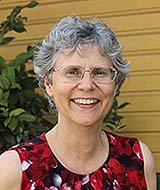

 Emeritus Professor, Environmental Engineering & Earth Sciences
Emeritus Professor, Environmental Engineering & Earth Sciences
Email: lc@clemson.edu
Ph.D., Colorado School of Mines, 1990, Geochemistry
B.A., University of Colorado at Colorado Springs, 1984, Geology & Chemistry
B.A., Indiana University, 1977, American Literature
Dr. Lee's major teaching and research interests are the chemistry of environmentally significant organic compounds. Her specific research interests involve the fate and transport of persistent organic pollutants (POPs), especially polychlorinated biphenyls (PCBs); pesticides; and petroleum.
Dr. Lee and her research group use enantioselective chromatography to understand the transformations and transport of chiral contaminants through soil, sediments, water, and biota. Chiral contaminants have stereoisomers that are non-superimposable mirror images, which often react at different rates while undergoing biological transformation. The difference in transformation rates provides insight about the fate of contaminants in natural systems.
Dr. Lee teaches CH 413 Chemistry of Aqueous Systems, EE&S 845 Organic Environmental Chemistry), EE&S 847 Advanced Environmental Chemistry, and EE&S 856 Pollution of the Aquatic Environment. She also helps coordinate the Biocomplexity Seminar which discusses current topics about the interactions of human and environmental systems.
Dang, V. D.; Lee, C. M.; and Walters, D. M. 2013. “Assessing Ongoing Sources of Dissolved Phase Polychlorinated Biphenyls (PCBs) in a Contaminated Stream.” Environmental Toxicology and Chemistry. 32(3):535-540.
Mobley, C.; Lee, C.; Morse, J.; Allen, J.; and Murphy, C. 2012. “Learning about Sustainability: An Interdisciplinary Graduate Seminar in Biocomplexity" International Journal of Sustainability in Higher Education. In Press.
Dang, V. D.; Walters, D. M.; and Lee, C. M. 2012. “Historical Changes in Polychlorinated Biphenyls (PCBs) Contaminated Sediments in Twevlemile Creek, South Carolina (USA)”. American Journal of Environmental Sciences. 8(1):11-15.
Dang, V. D.; Walters, D. M.; and Lee, C. M. 2010. “Transformation of Chiral Polychlorinated Biphenyls (PCBs) in a Stream Food Web.” Environmental Science and Technology. 44(8):2836-2841.
Lehmler, H.-J.; Harrad, S. J.; Hünderfuss, H.; Kania-Korwell, I.; Lee, C. M.; Lu, Z.; and Wong, C. S. 2010. “Chiral Polychlorinated Biphenyl Transport, Metabolism, and Distribution--A Review.” Environmental Science and Technology. 44(8):2757-2766.
Sivey, J. D. and Lee, C. M. 2008. “Using Popular Magazine Articles to Teach the Art of Writing for Non-Technical Audiences,” Journal of Chemical Education. 85(1):55-58.
Im, J.; Lee, C. M.; and Coates, J. T. 2008. “Comparison of Two Reference Black Carbon Sorbents to Determine Appropriate Model Black Carbon,” Chemosphere. 71(4):621-628.
Wong, C. S.; Pakdeesusuk, U.; Morrissey, J. A.; Lee, C. M.; Coates, J. T.; Garrison, A. W.; Mabury, S. A.; Marvin, C. H.; and Muir, D. C. G. 2007. “Enantiomeric Composition of Chiral Polychlorinated Biphenyl Atropisomers in Dated Sediment Cores.” Environmental Toxicology and Chemistry, 26(2):254-263.
Sivey, J. D. and Lee, C. M. 2007. “Polychlorinated Biphenyl Contamination Trends in Lake Hartwell, SC: Sediment Recovery Profiles Spanning Two Decades.” Chemosphere, 66(10):1821-1828.
Bzdusek, P. A.; Christensen, E. R.; Lee, C. M.; Pakdeesusuk, U.; and Freedman, D. L. 2006. “PCB Congeners and Dechlorination in Sediments of Lake Hartwell, South Carolina, Determined from Cores Collected in 1987 and 1998”. Environmental Science and Technology, 40(1):109-119.
Hengpraprom, S.; Lee, C. M.; and Coates, J. T. 2006. “Sorption of Humic Acids and α-Endosulfan by Clays” Environmental Toxicology and Chemistry, 25(1): 11-17.
Pakdeesusuk, U.; Lee, C. M.; Coates, J. T.; and Freedman, D. L. 2005. “Assessment of Natural Attenuation via In Situ Reductive Dechlorination of Polychlorinated Biphenyls (PCBs) in Sediments of the Twelve Mile Creek Arm of Lake Hartwell, SC, USA” Environmental Science and Technology, 39(4):945-952.
Pakdeesusuk, U.; Jones, W. J.; Lee, C. M.; Garrison, A. W.; O'Neill, W. L.; Freedman, D. L.; Coates, J. T.; and Wong, C. S. 2003. "Changes in Enantiomeric Fractions (EF) During Microbial Reductive Dechlorination of PCB132, PCB149, and Aroclor1254 in Lake Hartwell Sediment Microcosms" Environmental Science and Technology, 37(6):1100-1107.
Editor, Environmental Chemistry, Environmental Toxicology and Chemistry
National Science Foundation, Environmental Sustainability Program Manager, 2006-2007
Member, Environmental Engineering Committee, EPA Science Advisory Board, 2007-2010
Appointed to the U.S. Environmental Protection Agency (EPA) Science Advisory Board (SAB) Scientific and Technological Achievement Awards (STAA) Committee, 2012- present.